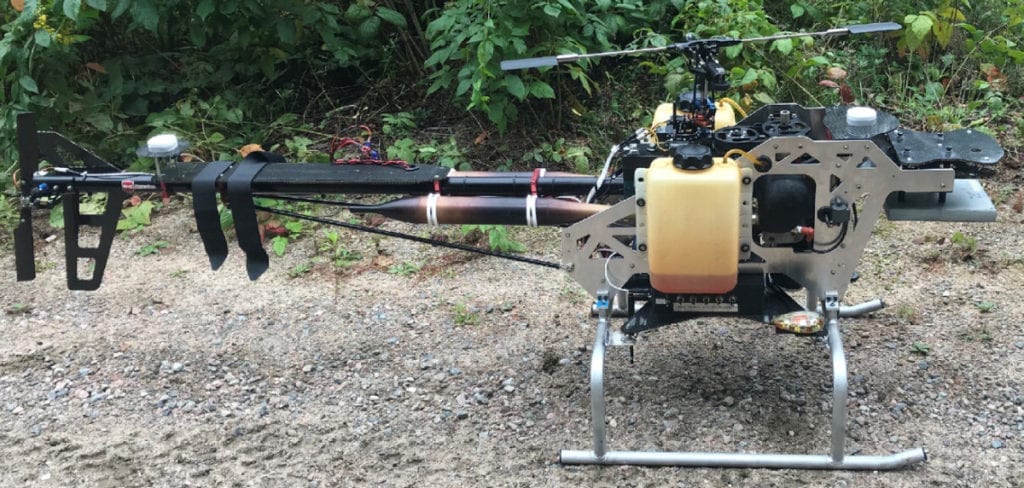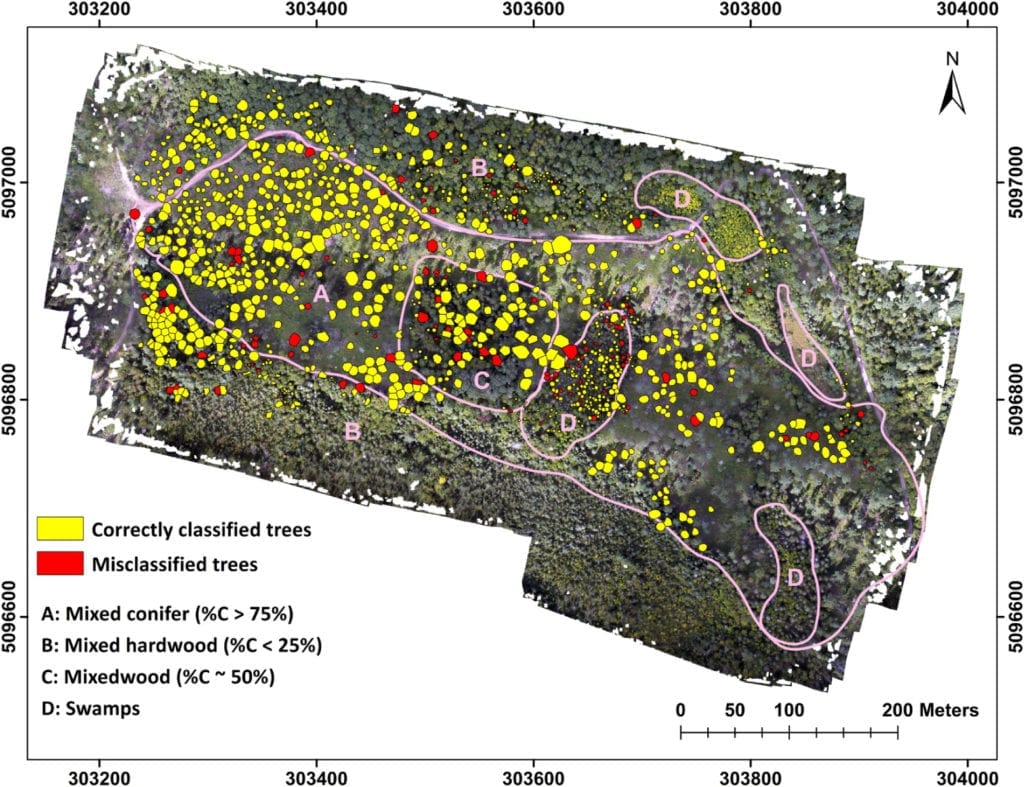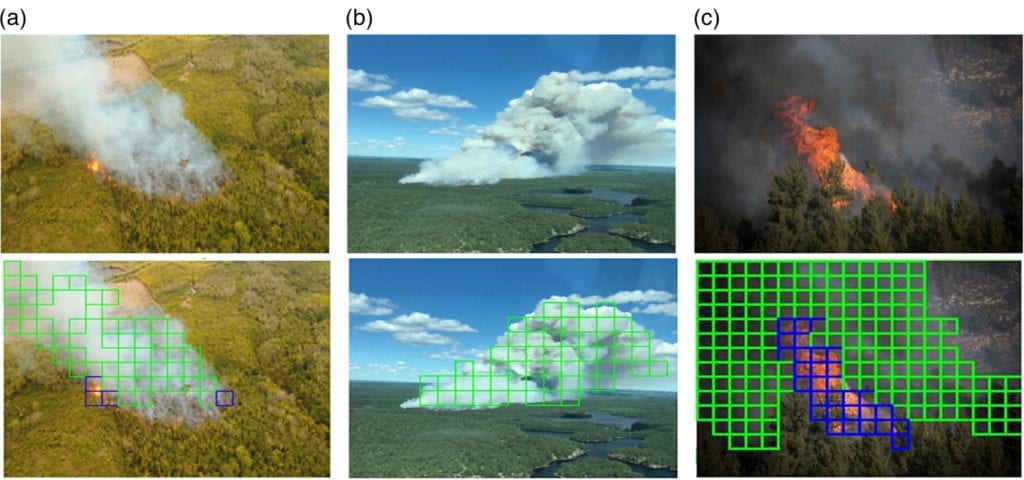Canada’s forests are scattered in research labs across the nation.
In one laboratory, forest fires weave their way through computer code, ending up on screens in pixels and probabilities.
In another, algorithms are learning to “see” conifers in ones and zeroes.
Both laboratories are leveraging artificial intelligence (AI) to understand and protect Canada’s forests.
In a study published in the Journal of Unmanned Vehicle Systems, York University PhD student Sowmya Natesan and colleagues outline their development of an AI algorithm that accurately identifies conifer species from images of trees.
Construction and paper industries around the world use conifer wood. Canadian pines, firs, spruce, and cedars are big exports, critically important to the country’s economy.
A key way to ensure that Canada’s forests remain productive is to “understand the presence and status of trees” according to Udayalakshmi Vepakomma, lead scientist at FPInnovations and co-author of the article.
Improved knowledge of tree species means that the forest industry can better manage and use these natural resources.
Foresters fly unmanned aerial vehicles (UAVs) with cameras attached, taking pictures of tree canopies. They use image processing software to try and identify the trees, but often fail.
 Unmanned aerial vehicle platform | Natesan et al.
Unmanned aerial vehicle platform | Natesan et al.
Current software requires high-quality pictures, but the quality of pictures captured by UAVs often varies. It depends on factors like camera angle, season, and lighting conditions.
The team studied forest canopies of Ontario’s Petawawa Research Forest. They collected hundreds of images over three years in different seasons, times of day, sunlight amount, and camera angles. These initial images were used to “train” the software so it could learn to correctly identify tree species.
More training data means more information for the software to learn from and develop faster pattern recognition and more accurate identification.



 Aerial forest fire images (top row) and successful detection of smoke and flame (bottom row) | Adapted from Hossain et al.
Aerial forest fire images (top row) and successful detection of smoke and flame (bottom row) | Adapted from Hossain et al.

